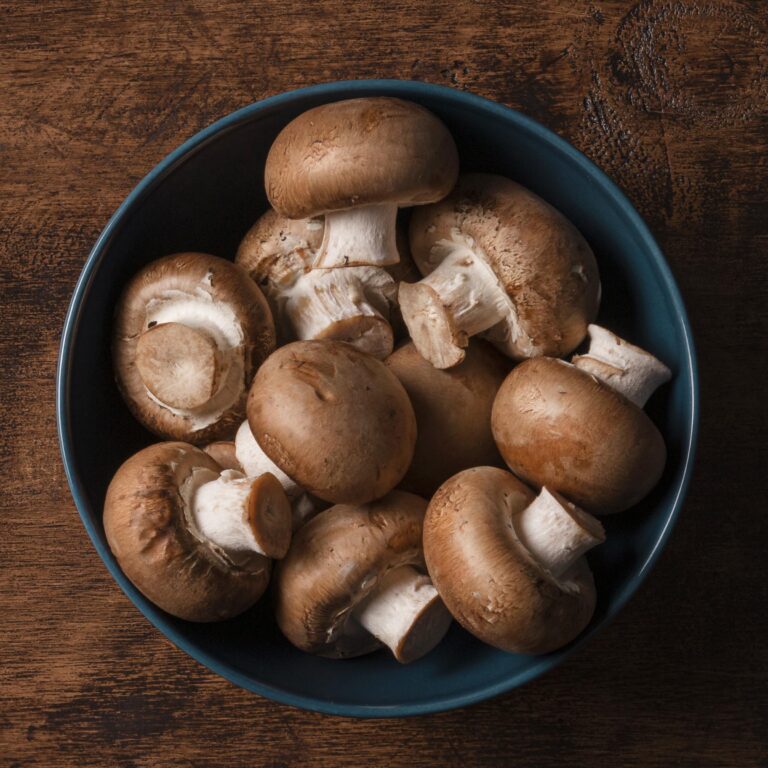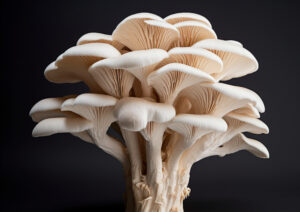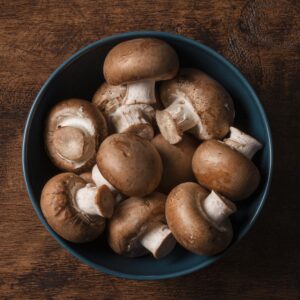THC and CBD are two popular compounds from cannabis, but what sets them apart? This quick guide for new users will break down their unique effects, potential health benefits, and legal aspects, specifically for Mississauga residents.
Whether you’re new to cannabis or curious about the differences, this guide has everything you need to know about THC vs CBD.
What Are THC and CBD?
THC (delta-9-tetrahydrocannabinol) and CBD (cannabidiol) are naturally occurring chemical compounds called cannabinoids found within the cannabis plant, specifically species like Cannabis sativa. They are known as phytocannabinoids, meaning they come from plants. These compounds interact with our body’s intricate endocannabinoid system (ECS).
The ECS is a complex cell-signaling system identified in the early 1990s by researchers exploring THC. It plays a vital role in regulating and balancing many processes in the body, including immune response, communication between cells, metabolism, memory, sleep, appetite, and pain sensation.
While THC and CBD share the same source, the cannabis plant, and even the same chemical formula, their effects diverge significantly due to differences in their chemical structure. Let’s examine each active ingredient more closely to understand their individual properties and impact on public health.
THC: The Psychoactive Cannabinoid
THC is the primary psychoactive ingredient found in marijuana plants, the compound most famous for producing the characteristic ‘high’ associated with marijuana consumption. It’s the main psychoactive compound that leads to altered states of consciousness. Its psychoactive properties manifest in various ways, which can differ based on the individual and the dose.
Common effects experienced after consuming THC include feelings of euphoria, deep relaxation, and altered sensory perception, particularly regarding time and space. It can also significantly increase appetite, often referred to as ‘the munchies.’ These effects primarily result from THC binding strongly to CB1 receptors, which are concentrated heavily in the brain and central nervous system.
This binding action mimics the effects of anandamide, a naturally occurring endocannabinoid, but THC’s effects are more potent and longer-lasting. The interaction stimulates the release of dopamine, a neurotransmitter linked to the brain’s reward system, contributing to the pleasurable sensations. However, high THC concentrations can sometimes induce less desirable effects like anxiety-like behavior or paranoia in susceptible individuals.
While similar in atoms to CBD (C21H30O2), the THC chemical structure has a specific cyclic ring and hydroxyl group placement. This unique chemical shape allows it to fit perfectly into the CB1 receptor, triggering the psychoactive response. Understanding this interaction helps explain why THC affects users so profoundly.
CBD: The Non-Psychoactive Cannabinoid
In contrast to THC, CBD stands out because it is non-psychoactive. This means consuming a CBD product will not induce the intoxicating ‘high’ associated with THC. This lack of psychoactive effects makes CBD an appealing option for individuals seeking potential therapeutic benefits without cognitive alteration.
CBD is often sourced from the hemp plant, a variety of Cannabis sativa specifically cultivated to contain low levels of THC (legally defined as less than 0.3% THC by dry weight in the US). CBD’s potential health benefits are a major area of research. Studies suggest CBD may help manage issues like anxiety, reduce inflammation contributing to chronic pain conditions, improve sleep quality in those with certain sleep disorders, and potentially protect nerve cells.
The way CBD interacts with the endocannabinoid system differs significantly from THC. It has a low affinity for CB1 and CB2 receptors and does not bind directly to them in the same way THC does. Instead, CBD is thought to work through various other receptor systems, potentially influencing serotonin receptors (implicated in mood and anxiety) and vanilloid receptors (involved in pain perception) and enhancing the levels of the body’s own endocannabinoids by inhibiting the enzymes that break them down.
The distinct properties CBD offers have led to a wide variety of CBD products available on the market. These include oils, tinctures placed under the tongue, capsules, edibles like gummies, and topical creams applied to the skin. CBD’s lack of psychoactive properties is a key factor in its growing popularity and acceptance.
THC vs CBD: The Key Differences
Comparing THC vs CBD reveals fundamental distinctions that influence their use, effects, and legal classification. Understanding these differences is crucial for making informed choices. Here is a summary of the primary distinctions:
Factor | THC (Tetrahydrocannabinol) | CBD (Cannabidiol) |
Psychoactive Effects | Yes (causes a ‘high’) | No (non-intoxicating) |
Chemical Structure | Same formula (C21H30O2), different arrangement of atoms (cyclic ring) | Same formula (C21H30O2), different arrangement of atoms (hydroxyl group) |
Primary Source Plant | Marijuana plants (higher THC concentrations) | Hemp plant (low THC concentrations, |
Legal Status (US Federal) | Schedule I Controlled Substance (marijuana) | Legal if derived from hemp ( |
Interaction with CB1 Receptors | Strong binder (agonist), causes psychoactivity | Weak binder, can modulate THC’s effects |
Potential Medical Uses | Pain relief, nausea reduction, appetite stimulation, muscle spasm control (e.g., multiple sclerosis) | Anxiety relief, seizure reduction (epilepsy), inflammation control (e.g., rheumatoid arthritis, psoriatic arthritis), neuroprotection |
Common Side Effects | Dry mouth, red eyes, increased heart rate, memory impairment, coordination issues, anxiety/paranoia (especially at higher doses) | Fatigue, diarrhea, changes in appetite/weight, potential drug interactions |
Drug Test | Typically screened for in standard drug tests. | Not typically screened for, but some full-spectrum CBD products may contain trace THC leading to a positive drug test. |
This table highlights the opposing characteristics regarding psychoactivity and legal framework. It also shows overlapping but distinct areas of potential medical application. These differences stem from their unique interactions with the body’s systems, primarily the endocannabinoid system.
Effects on the Body
The physiological effects of THC and CBD diverge significantly, impacting users in distinct ways. THC’s effects are generally more pronounced and immediate, particularly when inhaled. Users often experience relaxation and euphoria, but also potential downsides like impaired coordination, slower reaction times, and short-term memory difficulties.
THC can also increase heart rate shortly after consumption, which may be a concern for individuals with cardiovascular conditions. Some studies suggest it might temporarily affect blood pressure, although effects can vary. The intensity of THC effects often depends on the dose, method of consumption, and individual tolerance.
Conversely, CBD’s effects tend to be more subtle and are not intoxicating. Users often report a sense of calm or reduced anxiety without cognitive impairment. For conditions like chronic pain or inflammation, CBD’s effects may accumulate gradually over time with consistent use rather than providing immediate, dramatic relief.
Some research suggests CBD might have a slight effect on blood pressure, potentially lowering it, but more studies are needed. Unlike THC, CBD does not typically impair motor function or memory. Many people use CBD products during their daily routines without experiencing disruptive side effects.
Medical Uses
Both THC and CBD have garnered significant attention for their potential therapeutic applications across a range of health conditions, although research is ongoing for many uses. THC is recognized for several medical purposes, often utilized through medical marijuana programs where it is legal. It is frequently used to manage chronic pain, particularly neuropathic pain and pain associated with cancer.
THC is also effective in reducing nausea and vomiting, especially side effects caused by chemotherapy in cancer patients. Additionally, it can stimulate appetite, proving beneficial for individuals experiencing wasting syndrome associated with conditions like HIV/AIDS. THC may also help alleviate muscle spasticity related to multiple sclerosis and potentially reduce tremors in conditions like Parkinson’s disease, though more research is warranted.
CBD, leveraging its non-psychoactive nature, is being extensively studied for various health benefits. Perhaps its most well-established use is in treating certain severe forms of epilepsy.
Emerging evidence suggests CBD may offer relief for anxiety disorders, including generalized anxiety, social anxiety, and post-traumatic stress disorder (PTSD). Its anti-inflammatory properties make it a candidate for managing inflammatory conditions like rheumatoid arthritis and psoriatic arthritis. Some studies also explore its potential role in inflammatory bowel diseases like ulcerative colitis, offering hope for better management strategies.
Further research investigates CBD’s neuroprotective qualities for neurodegenerative disorders such as Parkinson’s disease and Alzheimer’s disease. Many individuals also use CBD products to aid with sleep disorders, reporting improved sleep quality. Preliminary lab research has even explored CBD’s effects on certain cancer cells, including breast cancer cells, but clinical evidence in humans is lacking, and it is not a substitute for conventional cancer treatment.
While some historical interest existed regarding THC for eye health (glaucoma), current medical consensus does not broadly support it due to limitations. Research into cannabinoids and specific areas like men’s health or sexual health is still developing, with complex and sometimes contradictory findings. Always consult healthcare professionals for diagnosis and treatment recommendations.
Side Effects and Risks
While often used for potential benefits, both THC and CBD carry potential side effects and risks. THC’s psychoactive nature means its side effects can be more immediately disruptive. Common adverse THC effects include dry mouth, red eyes, increased heart rate, coordination problems, delayed reaction times, and short-term memory impairment.
At higher doses or in sensitive individuals, consuming THC can lead to anxiety, fear, paranoia, or panic attacks. Long-term, heavy marijuana use, especially starting in adolescence, has been linked to an increased risk of developing chronic psychosis or other mental health issues in predisposed individuals. There is also a risk of developing cannabis use disorder, characterized by dependence.
Furthermore, THC consumption can impair driving ability, increasing the risk of accidents. THC is the primary compound screened for in most workplace and roadside drug test protocols. Using THC products, even where legal, can lead to positive test results with potential employment or legal consequences.
CBD is generally considered well-tolerated, with fewer and milder side effects compared to THC. Some reported side effects include nausea, fatigue, irritability, diarrhea, and changes in appetite or weight. The most significant risk associated with CBD is its potential to interact with other medications.
CBD can inhibit cytochrome P450 enzymes, which are involved in metabolizing many prescription drugs, including blood thinners like warfarin, some anti-seizure medications, and antidepressants. This interaction can alter the levels of these medications in the body, potentially leading to increased side effects or reduced efficacy. It is crucial to consult a doctor before using CBD, especially if you take other medications or have underlying health conditions.
Concerns also exist regarding the quality and purity of unregulated CBD products, which may contain inaccurate levels of CBD, undisclosed THC, or contaminants like pesticides or heavy metals. Choosing reputable brands that provide third-party lab testing results is important for safety, and understanding these potential health effects is vital for safe consumption.
How They’re Used
THC and CBD can be introduced into the body through a wide variety of methods, and the chosen method significantly influences the onset, intensity, and duration of effects. Common methods of consumption apply to both cannabinoids, though product availability might differ based on legal status. These methods include inhalation, oral ingestion, sublingual absorption, and topical application.
Inhalation, either through smoking marijuana flower or vaping cannabis concentrates or oils, offers the fastest onset of effects, typically within minutes. This is because the active ingredient is absorbed directly into the bloodstream through the lungs. However, smoking carries risks associated with inhaling burnt plant material, while the long-term effects of vaping are still being studied.
Oral ingestion involves consuming edibles like gummies, chocolates, baked goods, or capsules. The effects take longer to appear, usually 30 minutes to 2 hours, because the cannabinoids must pass through the digestive system and liver before entering the bloodstream. While the onset is delayed, the effects tend to last longer compared to inhalation.
Sublingual administration uses tinctures or oils placed under the tongue. This method allows for absorption through the mucous membranes directly into the bloodstream, bypassing initial liver metabolism. Onset is typically faster than edibles (15-45 minutes) but slower than inhalation, offering a balance between speed and duration.
Topical products, such as creams, lotions, and balms, are applied directly to the skin. These are often used for localized relief of pain or inflammation, as the cannabinoids interact with local receptors in the skin without entering the bloodstream in significant amounts. Therefore, topicals do not typically produce systemic or psychoactive effects.
The market offers a huge selection, including oils specifically formulated for different purposes, capsules for precise dosing, and various food and beverage items. The raw cannabis plant itself contains THC and CBD in their acidic forms (THCA and CBDA); heating through processes like smoking, vaping, or cooking (decarboxylation) converts them into their active forms (THC and CBD). Understanding these methods helps users choose the best approach for their needs.
Choosing Between THC and CBD
Selecting between THC and CBD, or deciding on a product combining both, depends largely on individual goals, medical needs, and sensitivity to psychoactive effects. If the primary aim is to achieve the euphoric or psychoactive effects associated with marijuana, THC is the relevant compound. Medically, THC might be chosen for conditions where its specific properties, like appetite stimulation or potent nausea relief, are desired.
Conversely, if the goal is to explore potential therapeutic benefits like anxiety reduction, inflammation management, or seizure control without experiencing intoxication, CBD is the more appropriate choice. Choosing a CBD product means carefully considering factors like full-spectrum, broad-spectrum, or isolate formulations.
Some individuals find that products containing a combination of THC and CBD offer the best results. The presence of CBD might potentially moderate some of the unwanted side effects of THC, such as anxiety or paranoia. Different ratios (e.g., 1:1, 5:1 CBD: THC) allow users to fine-tune their experience, balancing therapeutic benefits with psychoactive intensity.
Starting with lower doses is generally recommended, especially for those new to cannabis products or trying higher potency formulations. Gradually increasing the dose allows individuals to gauge their tolerance and find the minimum effective amount. Consulting with a healthcare provider knowledgeable about cannabis can provide personalized guidance, particularly when managing specific health conditions or considering potential drug interactions.
Explore the Benefits of THC vs CBD – Make an Informed Choice Today!
In comparing THC vs CBD, neither is inherently superior. THC offers psychoactive effects that can help with chronic pain, nausea, and appetite loss, while CBD provides therapeutic benefits for anxiety, inflammation, and seizures without the “high.” Understanding these differences – including their effects, legal status, and potential side effects – is essential for making informed decisions.
Individual responses vary, so starting with low doses is recommended.
For reliable THC and CBD products, choose Ace Mississauga Weed Delivery in Mississauga, Ontario.
FAQs
What is the difference between THC and CBD?
THC is psychoactive and causes a ‘high,’ while CBD is non-psychoactive and offers therapeutic benefits without altering consciousness. Both are cannabinoids from cannabis plants.
Can CBD help with anxiety?
Yes, CBD has been shown to reduce anxiety symptoms and improve mood. It’s commonly used for stress management without causing intoxication.
How does THC affect the body?
THC binds to CB1 receptors, leading to psychoactive effects like euphoria and altered sensory perception. It may also increase appetite and impair motor function.
What are the common side effects of THC?
Common side effects of THC include dry mouth, red eyes, increased heart rate, and anxiety. High doses can lead to paranoia or impaired coordination.




